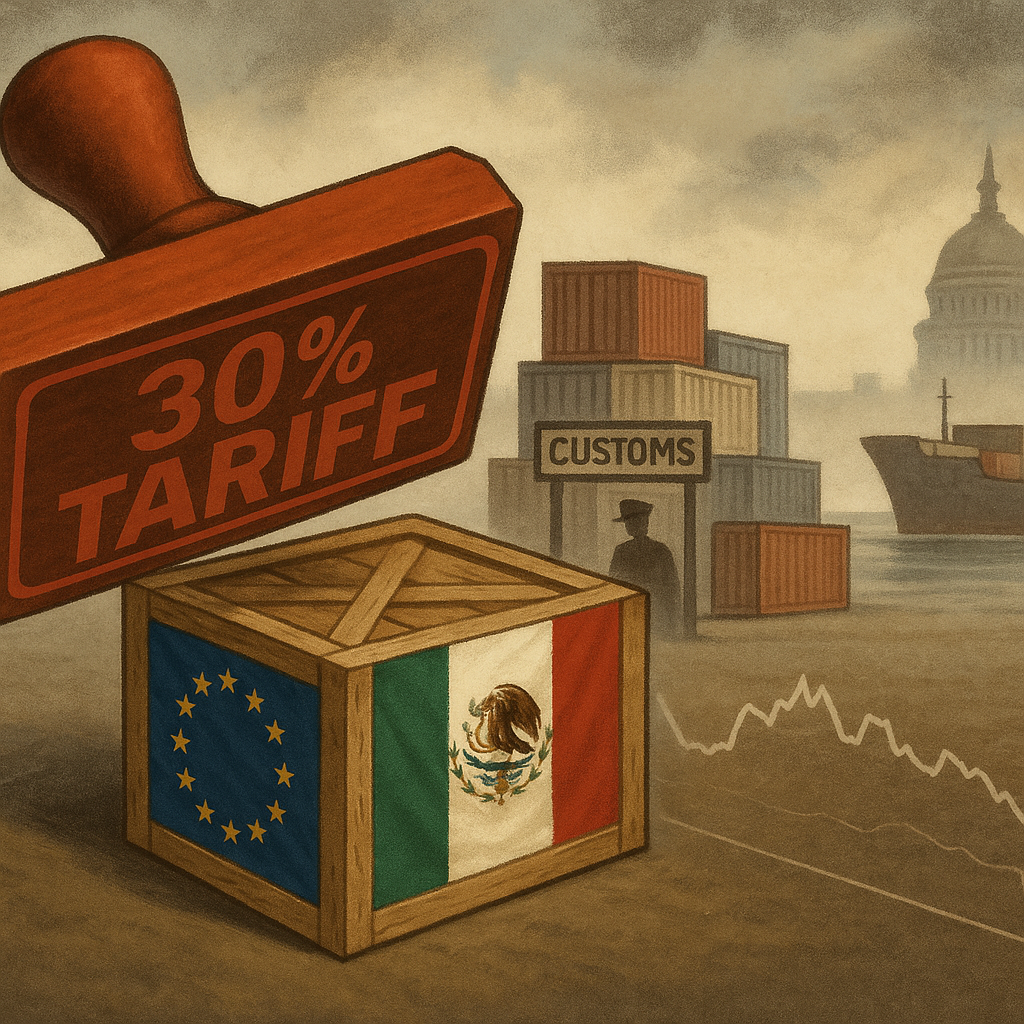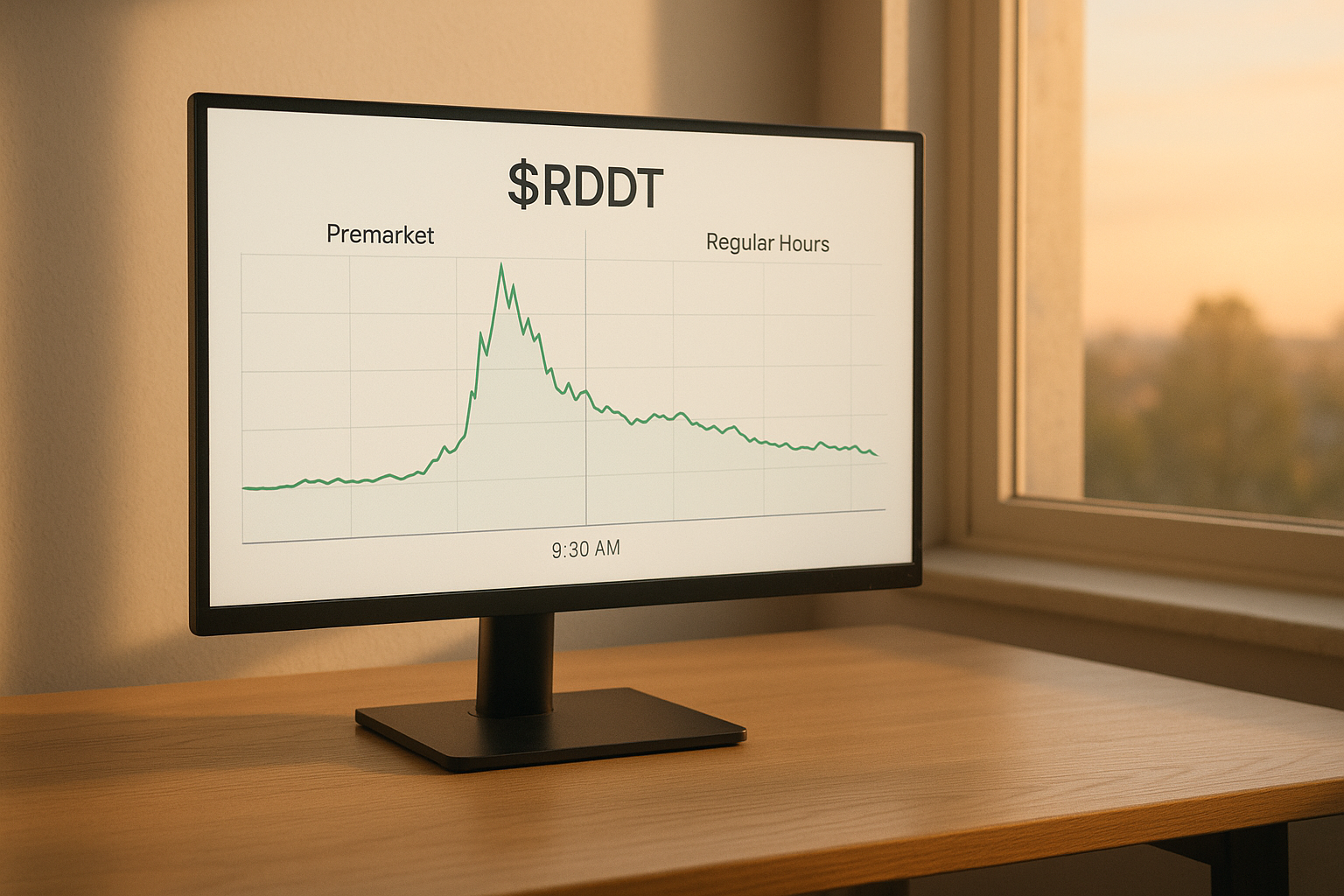Just when financial markets thought they'd caught their breath, Donald Trump has upended the chessboard again.
In a weekend social media salvo that sent diplomatic phones buzzing across multiple continents, the president-elect announced plans for a 30% tariff targeting both the European Union and Mexico—effective August 1st unless certain demands are met.
Markets hate surprises. They particularly hate weekend surprises with eleven-digit dollar implications.
The announcement came seemingly out of nowhere, blindsiding European negotiators who believed they were closing in on a trade understanding with the incoming administration. I spoke with three European trade officials yesterday (all requesting anonymity, naturally) who used variations of the same phrase: "completely unnecessary escalation."
Here's the thing about Trump's trade tactics—they follow a recognizable pattern while remaining utterly unpredictable in timing and target selection. It's like watching a thunderstorm you know is coming but can't precisely locate on radar.
"This is classic Trump," says Meredith Wilson, chief strategist at GlobalTrade Partners. "Create maximum discomfort for your negotiating partner, then position any outcome short of your maximum demand as a reasonable compromise."
The 30% figure itself deserves scrutiny. Not 25%, not 35%—thirty percent. The specificity suggests either careful economic modeling or, more likely, a psychological calculation about what number would create maximum leverage without triggering immediate economic catastrophe.
For Mexico, the situation carries extra complexity. Trump explicitly linked the tariff threat to border security and drug trafficking—essentially treating trade policy as an extension of national security policy.
"When you stop allowing your country to be used as a Narco-Trafficking Playground, the Tariffs will come off," Trump wrote, adding another dimension to what has traditionally been treated as separate policy domains.
Having covered U.S.-Mexico relations since 2017, I've watched this movie before. The difference this time? Mexican President Claudia Sheinbaum is new to office and eager to establish herself as nobody's pushover.
The economic stakes are enormous. Last year, U.S.-EU trade totaled nearly $1.3 trillion, while U.S.-Mexico exchange reached $798 billion. A 30% tariff would disrupt supply chains that thousands of American companies have spent decades optimizing.
"We're already getting calls from clients asking whether they should start diversifying suppliers," says Carlos Gutierrez, former Commerce Secretary and current supply chain consultant. "The problem is—diversify to where? If you're avoiding both Europe and Mexico, your options narrow considerably."
Market reaction has been predictably negative. Futures dipped immediately after the announcement, with particular pressure on automotive stocks, agricultural exporters, and retailers dependent on Mexican manufacturing.
The peso took a swift hit too—down nearly 4% at one point—which creates its own ripple effects. When currencies swing violently, debt service problems aren't far behind (just ask anyone who lived through the 1994 Tequila Crisis).
What's particularly frustrating for market participants is the timing. The Federal Reserve has been signaling potential rate cuts, but inflation concerns from tariffs could complicate that calculus.
"It's like watching someone slam on the brakes and accelerator simultaneously," one bond trader told me, sighing audibly during our call.
For European officials, the August 1st deadline feels particularly arbitrary. They'd been working toward a framework agreement addressing Trump's longstanding complaints about agricultural access and automotive tariffs.
Now? They're essentially being told the race course has been redesigned halfway through the marathon.
Look, there's a method behind what critics call "trade chaos." Trump's economic team believes America's trading partners have grown too comfortable with arrangements that disadvantage U.S. workers. Creating discomfort—even temporary economic pain—is viewed as necessary to force meaningful concessions.
Does it work? The evidence is mixed. During Trump's first term, revised agreements with Canada, Mexico and limited deals with China showed some gains for American interests, though economists debate whether those benefits outweighed broader market disruption.
What happens next depends largely on how Mexico and the EU respond. Will they:
- Quickly offer concessions to avoid the tariffs
- Announce retaliatory measures targeting politically sensitive U.S. exports
- Attempt to wait out what might be a negotiating tactic
My money's on a combination of 2 and 3, with European officials particularly reluctant to be seen capitulating to pressure.
Meanwhile, multinational corporations face impossible planning challenges. Do they absorb potential tariff costs, pass them to consumers, or restructure supply chains based on threats that might never materialize?
"We're essentially asking businesses to place billion-dollar bets on poker hands they can't see," says economist Damian Reeves.
As August approaches, expect frantic behind-the-scenes negotiations, market volatility, and heated rhetoric from all sides. The financial implications will be measured in billions, even as the announcements continue to arrive in social media bursts that would have been unimaginable in previous administrations.
And that's the new normal of global trade policy—massive economic consequences delivered in bite-sized digital declarations, often on weekends when markets can't immediately respond.
For better or worse, the art of the deal has gone digital. And nobody's weekend plans are safe anymore.




